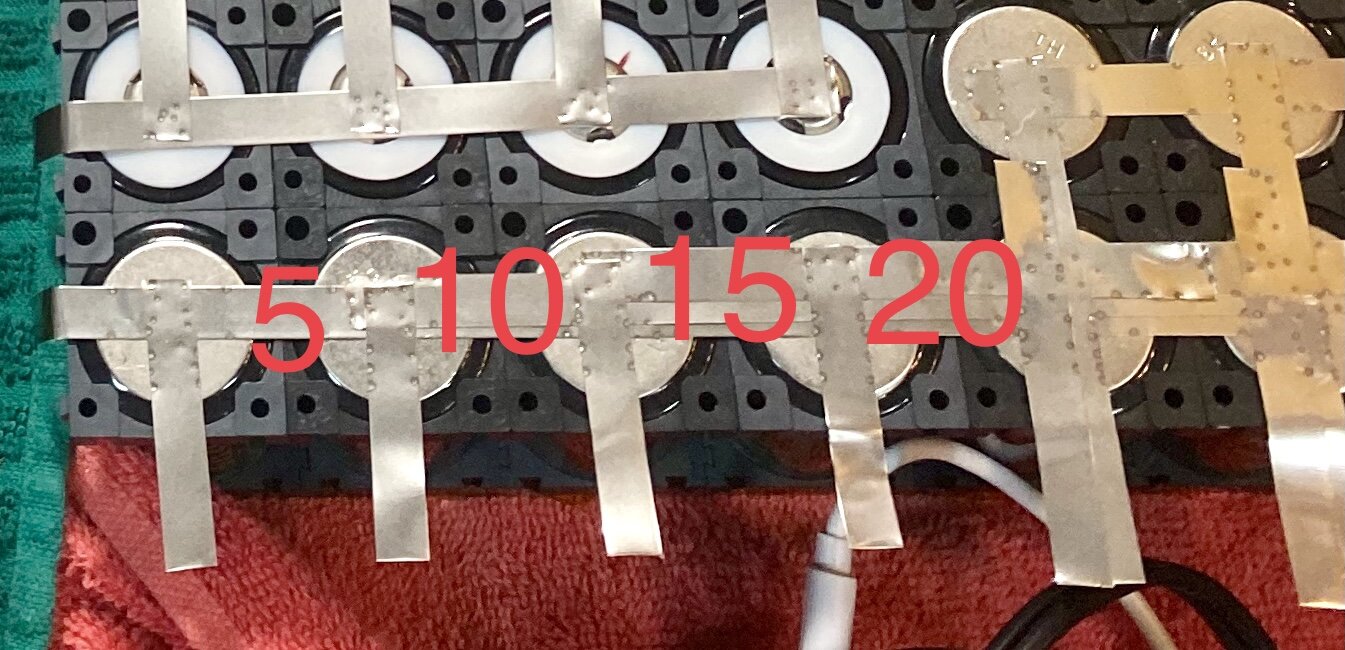In the battery being built above, the cells are not aligned in neat and even patterns. This is due to space limitations and just makes things complicated. With a little thought, major problems can be avoided, and the implementation takes a small amount of effort.
In this example, I’m building a 16s16p battery. That’s fancy talk for a 48v battery made up of a ton of tiny battery cells. Each cell is 3.2v, and when I link 16 of them up in series, I end up with 51.2v (which ironically is considered a 48v battery). Each cell is only 6ah, so if I just linked 16 of them up in series I would have a 48v battery that holds 6amps; not very useful to power the electric motor in our sailboat along with all of our house loads. To beef up the amp capacity a bit, we simply add more cells in parallel, 15 more to be precise! This gives us a battery that will hold 16x6=96 amp hours and is made up of 16 cell groups in series.
The final result is 16 series and 16 parallel, or also called a 16s16p battery.
That’s cool and all, but why do the cells need to be in strange interlocking patterns? Space. Being how these are batteries for a boat, space is never existent and we will need to cram these batteries into wherever we can fit them. We didn’t have the space to fit 16 cells in a row, so we arranged them into an arrangement that is 10 cells wide. This means that each parallel group is 10 cells in a row with another 6 cells crammed around next to them in the next row. The next row can fit 4 more cells of the next group, the following row is 10 of the same, and then 2 more cells spilling over into the next row. This pattern will continue all the way down the line until you finally get to the last cell group where the pattern just ends.
Why does this matter?
You need to know how much power you plan on pulling from your battery at any point in time and then build the battery to handle this load. In our case, the battery will need to supply 400 amps to power our electric motor when it runs at full speed. Building one battery that can yield 400 amps is pretty ridiculous so we did the logical thing of building 5 batteries that combined will yield 400 amps. Each battery only needs to do 1/5th of the work and therefore each battery will only need to yield 80 amps.
80 amps is our magical number and those pretty Ni strips we have linking the cells together can only flow 5 amps.









